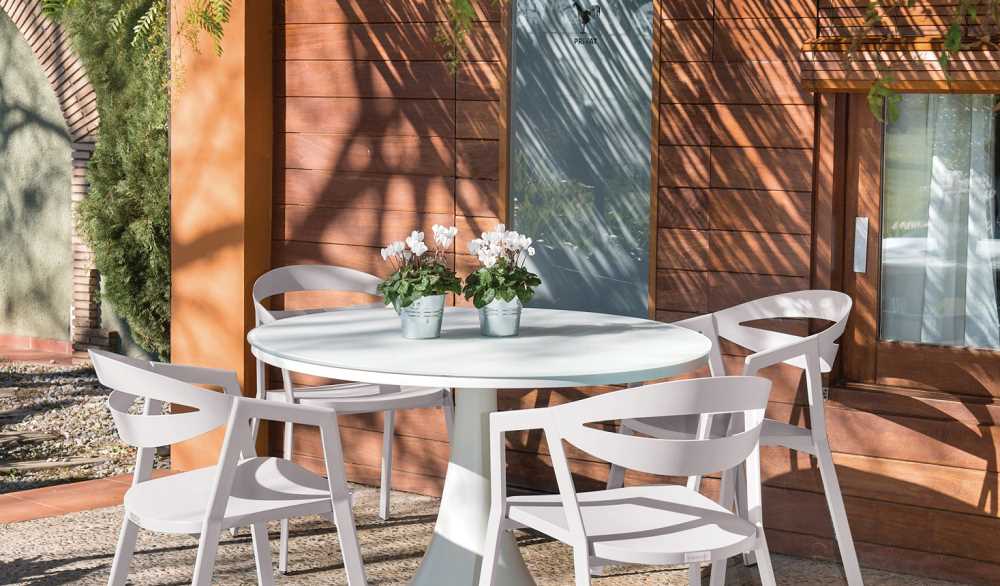
What Will the Furniture of the Future Be Made Of?
Share
In the conversations about architecture that we are having in the world today, materials are a very pervasive topic. There are discussions about the viability of concrete in the contemporary context, about how wood can be sourced more sustainably, and about how biodegradable materials, such as bamboo, should be more present in our urban environments.
But we also need to talk about what goes into these buildings – namely, the furniture that decorates, enhances and makes the buildings around us habitable. The materials used to make these objects have evolved steadily over the centuries, and as we approach the end of 2022, it’s worth asking – what does the future hold for the materials our furniture will be made from?

Well, the facts are that this future doesn’t consist of completely new materials per se. It consists of rethinking the existing materials we already use to build furniture, repurposing them in innovative ways.
As a naturally renewable and readily available material, wood is a popular and sustainable choice for the chairs, tables, and cabinets that fill our homes, workplaces, and recreational spaces. However, much of today’s wood furniture is not biodegradable. Many wood furniture products are coated with polyurethane—a liquid coating applied to minimize the way the wood is impacted by solvents, water, and abrasion. Polyurethane, like a type of plastic, decreases the biodegradability of wood.

The future of wood furniture may instead see the wider adoption and advocacy of plant-based oils such as tung oil or linseed oil for finishing. Approaches from furniture companies such as Oakland, California-based Model No. 1 could become more common in the distant future. Its hardwood products are finished with bio-resins, which compost more easily over time and are therefore more environmentally friendly.
Wood is also present in another approach that may become more common in the future – biofabrication, in which biological organisms are used to make new materials. A 2017 project by furniture designer Sebastian Cox and interdisciplinary researcher Ninela Ivanova featured a series of lamps and benches made from wood waste and a fungal plant. As the vegetative part of the fungus grows, it binds the wood waste around the frames to form compostable furniture. It’s a development that’s also aesthetically appealing, but it’s not yet clear how it would be produced on a global scale.

But as designers experiment with materials ranging from lab-grown cellulose to spider silk, the future of furniture materials also seems to be moving toward what’s discarded and thrown away being front and center. An armchair manufactured by Dutch company ZUIVER Group in 2019 is partly made from waste produced by global coffee consumption. Furniture brand Actiu recently launched a chair made from 100 percent recycled fiberglass and polypropylene plastic — sourced from vegetable and fruit crates from Spain’s Andalusia region.
Designed in conjunction with Italian architecture firm Archirivolto Design, it is a minimalist, multifunctional piece of furniture – and perhaps points to a future in which the malleability of materials will become even more important, as designers seek to design objects that fit seamlessly into a variety of contexts.

The future of furniture materials is perhaps best exemplified by this year’s Salone del Mobile, where a number of designers and architects explored alternative materials – responding to the Salone’s theme of incorporating environmental awareness and sustainability into furniture production. Dutch materials development company Cooloo has been experimenting with the idea of creating durable furniture from recycled materials. Its Ameba chair, designed by Hugo de Ruiter, goes against the grain of a wooden or metal frame, instead being cut from a block of foam, and comes in a variety of upholstery options – including recycled denim and leather.
The future of furniture seems to be moving in a direction where existing materials are enhanced by new materials, and where reuse and recycling are done creatively to result in bolder and more innovative forms. Perhaps it is also a future of even closer collaboration between furniture designers, researchers, architects and materials suppliers, where breakthrough material discoveries exist alongside greater consideration of the origin and end of materials.
